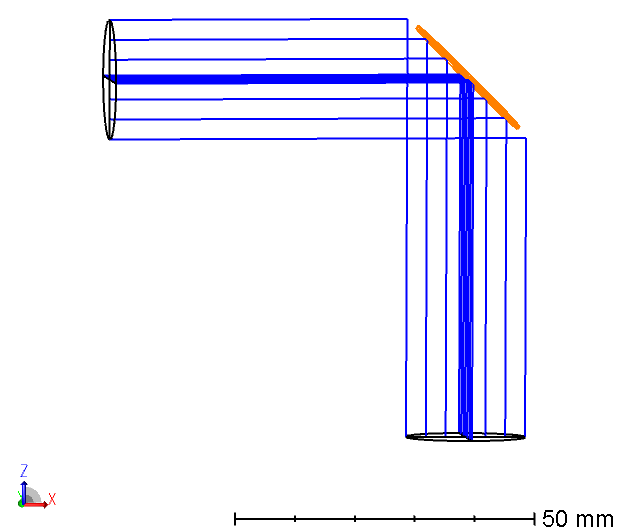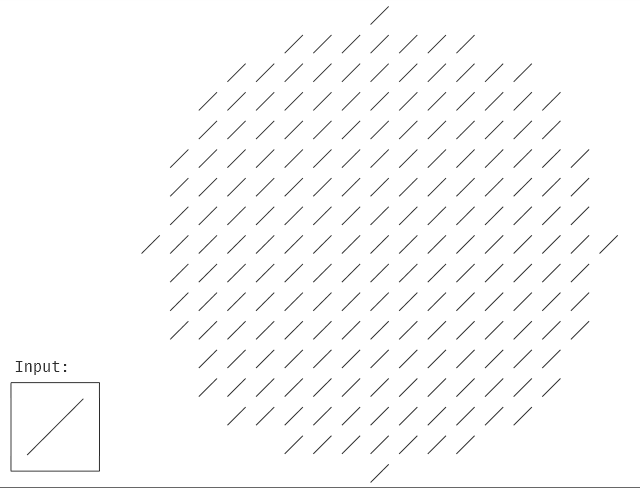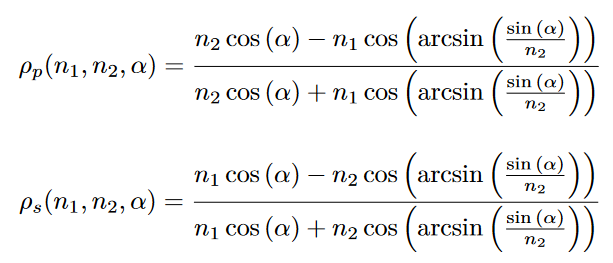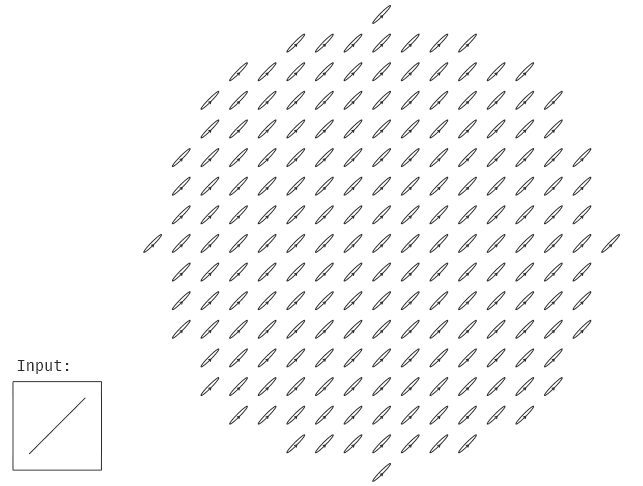Hi,
I have a question regarding the behaviour of polarized rays at metallic (MIRROR) interfaces, in my case the coating is SILVER. I go in with diagonally polarized rays (from below in the image, propagating in positive z-direction).

The polarization before the rays hit the mirror look like this

Now I WOULD expect, based on the Fresnel equations for the reflection coefficients rho_p and rho_s that for a silver mirror at 45° with complex refractive index n_2 = 0.18 + 6.2*j that the reflection causes a phase difference between the two components of about 190°. That would mean that the polarization would change from diagonal to roughly antidiagonal (a bit elliptical along the antidiagonal direction.

However, I do not observe this, the polarization stays roughly diagonal (with an elliptical part).

Do I missunderstand the reference frame of the polarization pupil map in zemax? Does zemax change the direction in which it looks onto the rays somehow, such that diagonal and antidiagonal become exchanged? Or am I getting the physics wrong?
Thank you very much in advance!



